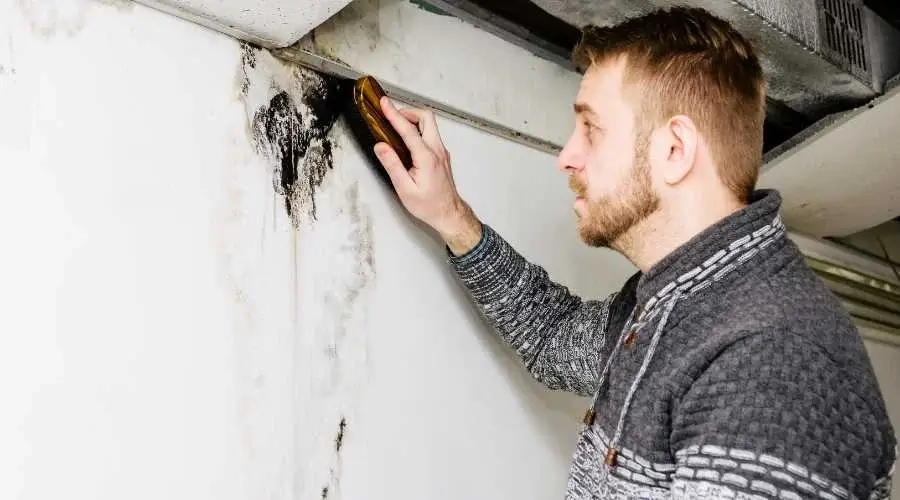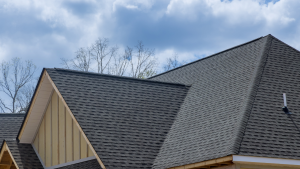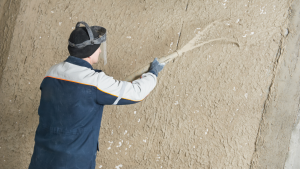Water infiltration through stucco is a very dangerous problem. Even though stucco siding is a stylish alternative for house siding, if it needs to be installed correctly, several problems may result in water infiltrating the siding.
Taking action immediately is critical since water entry into stucco may result in mold growth and other water damage problems. The first step in avoiding and managing stucco water intrusion in your house is understanding how it happens.
How Can Water Infiltrate Stucco?
If stucco is intended to provide a sturdy and streamlined siding option that can handle water without any problems, how does stucco water penetration occur? Water may seep through stucco siding directly, via cracks, or through poor installations.
Direct Infiltration
Stucco should be watertight when sealed, although this is only sometimes true. Water can pierce the stucco surface immediately for various causes, which might result in a growing water intrusion problem. After breaking the surface, wicking may cause the water to drop quite a distance.
If stucco comes into frequent touch with moisture, water may seep through it. The surface should be able to endure the weather without any issues if it is not constantly moist. But sometimes, water does manage to get inside. Any continual water source, such as sprinklers that accidentally keep the walls damp, might allow water to seep through the stucco.
Entering Through Cracks
Of course, a sturdy, complete layer of stucco serves solely as a reliable water barrier. If fractures develop for whatever cause, water may enter the structure. Once there, they could grow and move about, making the cracks worse and allowing more water.
Numerous factors may cause cracks to form. You could notice minor exterior fractures if your house gradually moves. It is not a structural problem in and of itself. However, it may enable water to enter the building, which might cause other issues, including mold growth.
Improperly Installed Flashing
On the other hand, stucco can only serve as a solid barrier and cannot completely enclose your property. Your roof’s underhang and other structures may touch your windows and stucco façade. Moisture barriers and flashing are utilized to prevent moisture from entering these locations.
However, subpar building techniques in these locations might allow water to penetrate the stucco. When you discover leaks, remember that even a tiny amount of water may, over time, result in significant damage.
What Factors Can Contribute to Water Intrusion?
Numerous unique sources may contribute to water intrusion. Various factors might be at play, including plant growth on the stucco surface, different outside installations, and other things.
Prior awareness of these potential dangers is essential. They may have been causing hidden harm for a long time, eventually leading to mold development and degradation throughout your home. Consider these crucial considerations to protect your stucco siding against water intrusion, which might be dangerous.
Planters and Plants Too Close to Walls
An overabundance of plants close to exterior walls might quickly become a severe issue. The simple fact is that soil contains a significant quantity of moisture. Your stucco siding will gradually absorb water if it comes into contact with dirt.
Leaning planters, flowerbeds, or garden boxes against the side of your home runs the danger of causing severe damage. Any plant allowed to grow too close to your siding may create an environment that is too wet and detrimental to the siding’s long-term maintenance.
Light Fixtures
Exterior lighting fixtures are one of the most typical places when water enters stucco. These make a hole in the stucco for the light fixture box, and the moisture barrier must often be fitted correctly in that hole. Rainwater can easily leak within the walls.
Light fixtures are the most prevalent issue, yet they are not the only one. Any external installation might be the cause of the problem. Naturally, any outdoor taps might cause water penetration. Lack of separation between a deck or patio structure might allow water to enter the house.
If you have a similar issue, utilize various siding materials on numerous portions of your home. It could be challenging to ensure that every seam is treated properly since every kind of siding has different considerations that must be made. You may prevent this issue by hiring a contractor to build your siding.
Ivy and Other Growth
Does the stucco siding have ivy growing on it? Even though it looks beautiful, it might harm your house. Rootlets allow ivy plants to cling to walls. These protrusions could damage the stucco’s outside, enabling moisture to enter.
Ivy can gradually inflict significant moisture ingress and significant harm. Ivy should be on the list since most people wouldn’t believe a beautiful plant like ivy could be dangerous, but you should also be aware of other plants that could be dangerous.
Moss could harm your stucco siding as much as it does, if not more. Its roots may reach well below the surface, allowing moisture to seep in and penetrate the walls. Even though it’s unusual for homeowners to allow moss to grow unchecked on the exterior of their property, you must take immediate action to prevent harm.
Deal with Stucco Water Intrusion the Right Way
Do you suspect your home’s stucco may be a water entrance point? Contact Jersey Shore Stucco to learn more about your alternatives in such a situation. We can fix damaged stucco and remove it if necessary, providing siding options and treatments to help avoid future problems.




